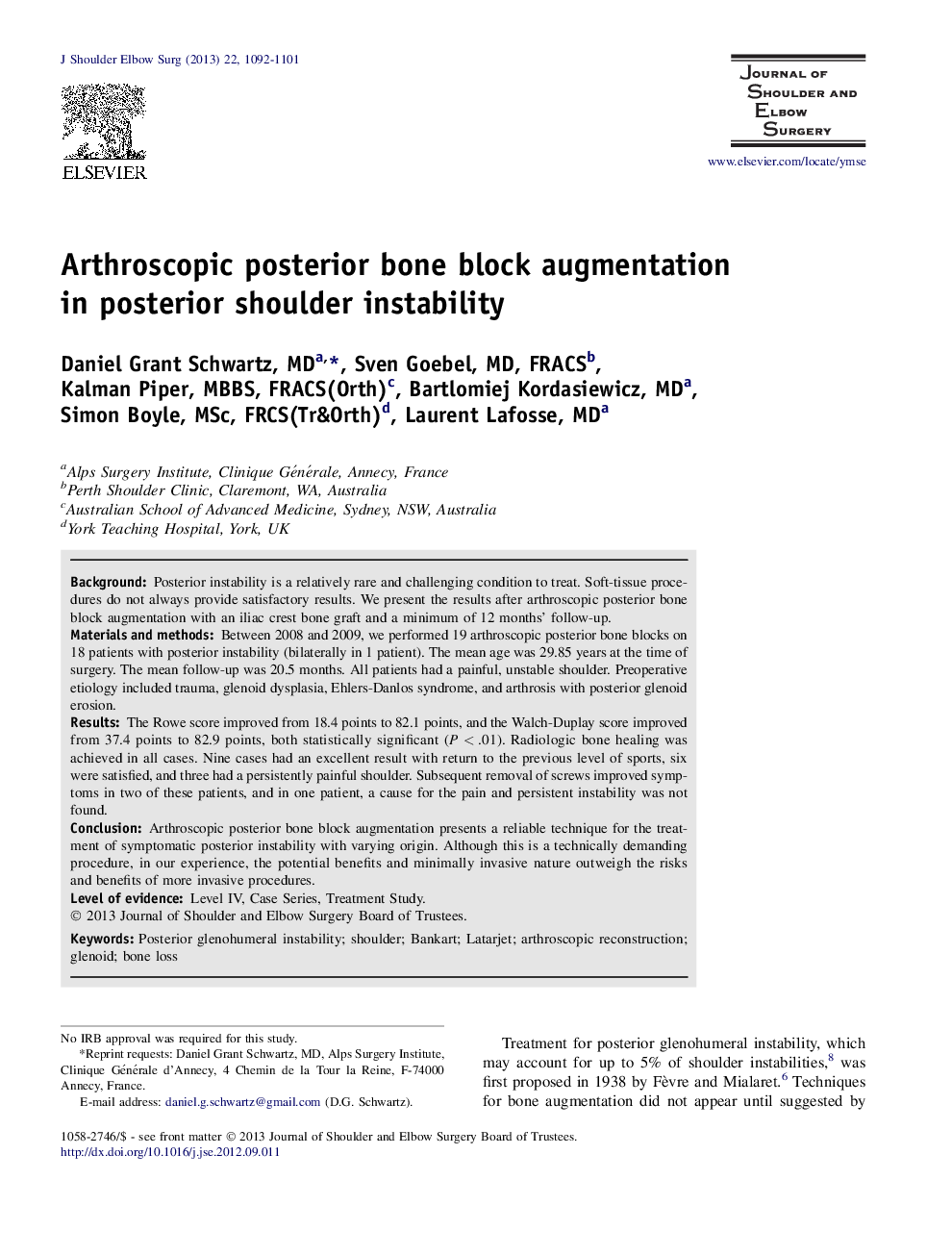| Article ID | Journal | Published Year | Pages | File Type |
|---|---|---|---|---|
| 4073636 | Journal of Shoulder and Elbow Surgery | 2013 | 10 Pages |
BackgroundPosterior instability is a relatively rare and challenging condition to treat. Soft-tissue procedures do not always provide satisfactory results. We present the results after arthroscopic posterior bone block augmentation with an iliac crest bone graft and a minimum of 12 months' follow-up.Materials and methodsBetween 2008 and 2009, we performed 19 arthroscopic posterior bone blocks on 18 patients with posterior instability (bilaterally in 1 patient). The mean age was 29.85 years at the time of surgery. The mean follow-up was 20.5 months. All patients had a painful, unstable shoulder. Preoperative etiology included trauma, glenoid dysplasia, Ehlers-Danlos syndrome, and arthrosis with posterior glenoid erosion.ResultsThe Rowe score improved from 18.4 points to 82.1 points, and the Walch-Duplay score improved from 37.4 points to 82.9 points, both statistically significant (P < .01). Radiologic bone healing was achieved in all cases. Nine cases had an excellent result with return to the previous level of sports, six were satisfied, and three had a persistently painful shoulder. Subsequent removal of screws improved symptoms in two of these patients, and in one patient, a cause for the pain and persistent instability was not found.ConclusionArthroscopic posterior bone block augmentation presents a reliable technique for the treatment of symptomatic posterior instability with varying origin. Although this is a technically demanding procedure, in our experience, the potential benefits and minimally invasive nature outweigh the risks and benefits of more invasive procedures.
